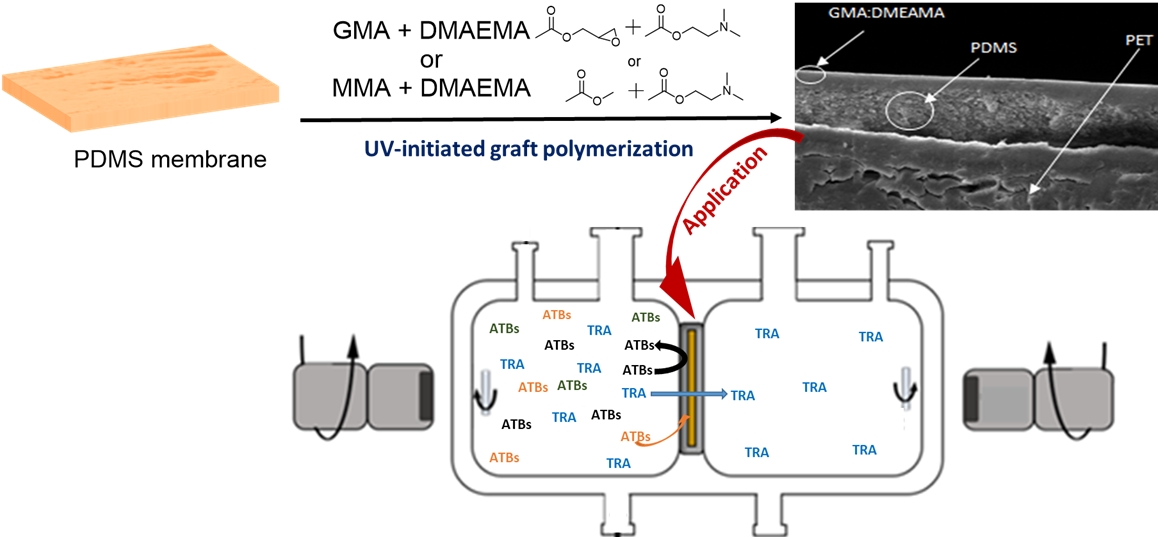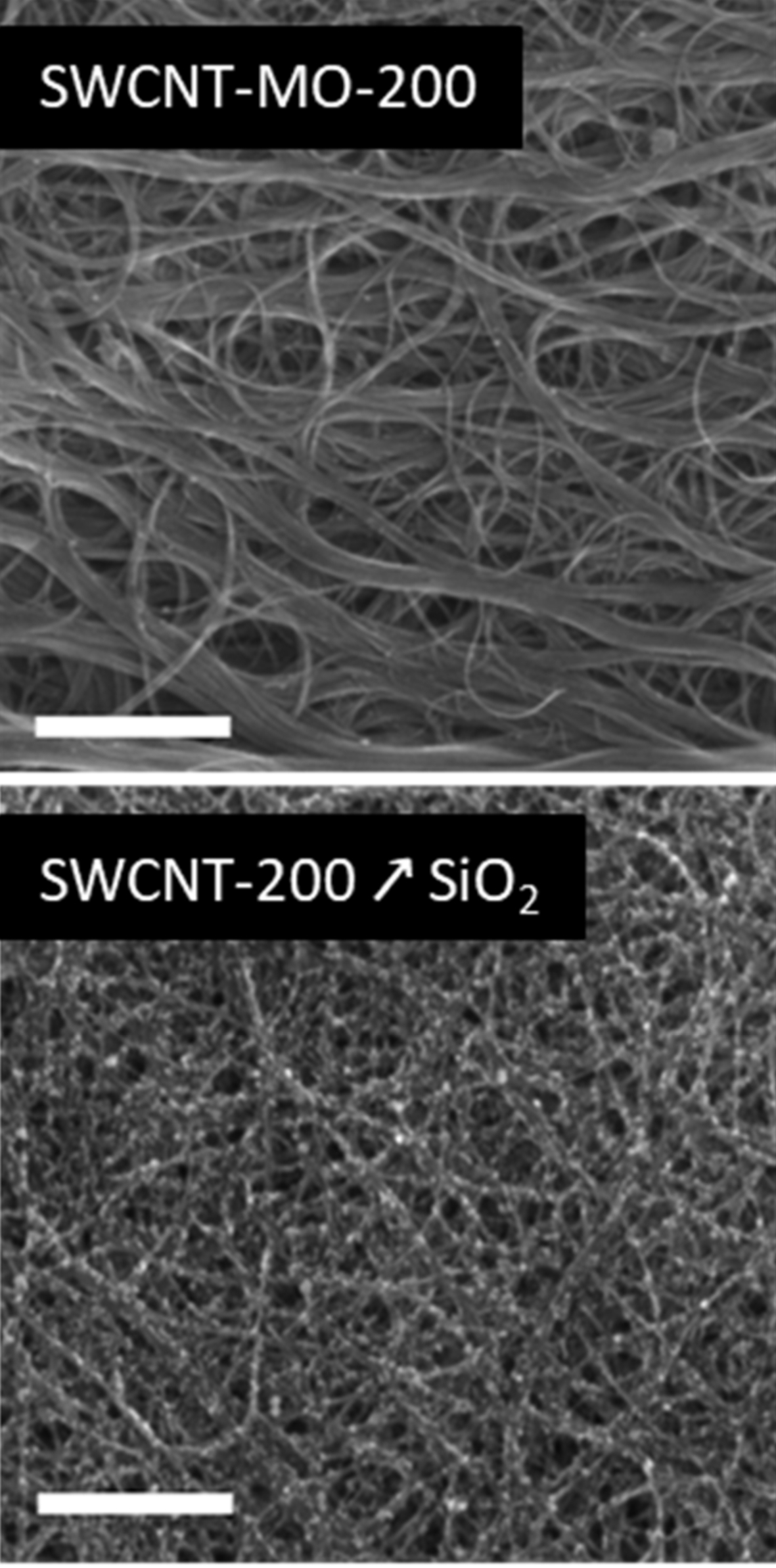Removal of emerging contaminants from water with membranes
Our research on emerging contaminants addresses their removal of from water using membrane technology. We reviewed different membrane materials, comparing those that separate based on particle size with dense hydrophobic membranes designed for targeted removal of certain classes of contaminants. In our studies, cutting-edge materials such as hydrophilic and hydrophobic single-walled carbon nanotube membranes were tested for eliminating antibiotics with promising filtration and sorption results. Additionally, we investigated the use of PDMS membranes for separating antibiotic mixtures, observing their complex co-elution but we improved membrane selectivity to certain antibiotics by surface modification. Furthermore, we developed polymer-ZnO nanocomposite membranes to effectively remove organic dyes prevalent in various industries.
 |
 |
UV grafting of polydimethylsiloxane membranes for tramadol separation via pertraction. SEM of original carbon nanotubes and with SiO2 nanoparticles deposited on their surface
- Pasichnyk M., Gaalova J., Minarik P., Vaclavikova M., Melnyk I.: Development of polyester filters with polymer nanocomposite active layer for effective dye filtration. Sci. Rep. 12(1), 973, 2022. DOI
- Bourassi M., Pasichnyk M., Oesch O., Sundararajan S., Travnickova T., Soukup K., Kasher R,; Gaalova J.: Glycidyl and Methyl Methacrylate UV-Grafted PDMS Membrane Modification toward Tramadol Membrane Selectivity. Membranes 11(10), 752, 2021. DOI
- Gaalova J., Bourassi M., Soukup K., Travnickova T., Bousa D., Sundararajan S., Losada O., Kasher R., Friess K., Sofer Z.: Modified Single-Walled Carbon Nanotube Membranes for the Elimination of Antibiotics from Water. Membranes 11(9), 720, 2021. DOI
- Karaszova M., Bourassi M., Gaalova J.: Membrane Removal of Emerging Contaminants from Water: Which Kind of Membranes Should We Use? Membranes 10(11), 305, 2020. DOI